NORTH VIETNAM
The North of Vietnam is still called « Le Tonkin » as in the French era.
It is divided into three regions: The Red River Delta, the middle region and the high mountain region of the far north.
It is these last two which are the most attractive, both for their landscapes of extraordinary splendor and for the diversity of the ethnic groups that inhabit them….which will not leave you indifferent to their still wild beauty!

For thirty years the Vietnam War opposed the north and the south. It is the north that has won and is leading the country. It is therefore the administrative region of the country. This is where the capital, Hanoi, is located, which brings together all the major officials.
Stretching from the Chinese border to that of Laos, North Vietnam (Bac Bo for the Vietnamese) is a region rich in history, landscapes and peoples. It is the crucible of Vietnamese civilization, where its destiny was played out, particularly in its struggle to free itself from Chinese tutelage.
This region is also home to the two most visited tourist sites: Sapa and Halong Bay. Sapa is known for its rice terraces cultivated by the Hmong, an ethnic minority with colorful clothes. Halong Bay can be visited by boat, there are limestone growths forming small islands. It is a breathtakingly beautiful landscape.
The mountains, just like the countryside, will lead you to meet the inhabitants and their traditional cultures, in particular those of the minorities, which are particularly numerous in the northern mountains of Vietnam.
Major regions of North Vietnam
✔ The North West (Tây Bắc) or Tonkin
It is one of the two regions with no maritime access, it includes six provinces.
- The province of Lào Cai which chief town is Lào Cai.
- The province of Lai Châu which chief town is Lai Châu.
- The province of Điện Biên which chief town is Điện Biên Phủ.
- The province of Yên Bái which chief town is Yên Bái.
- The province of Sơn La which chief town is Sơn La.
- The province of Hòa Bình which chief town is Hòa Bình.

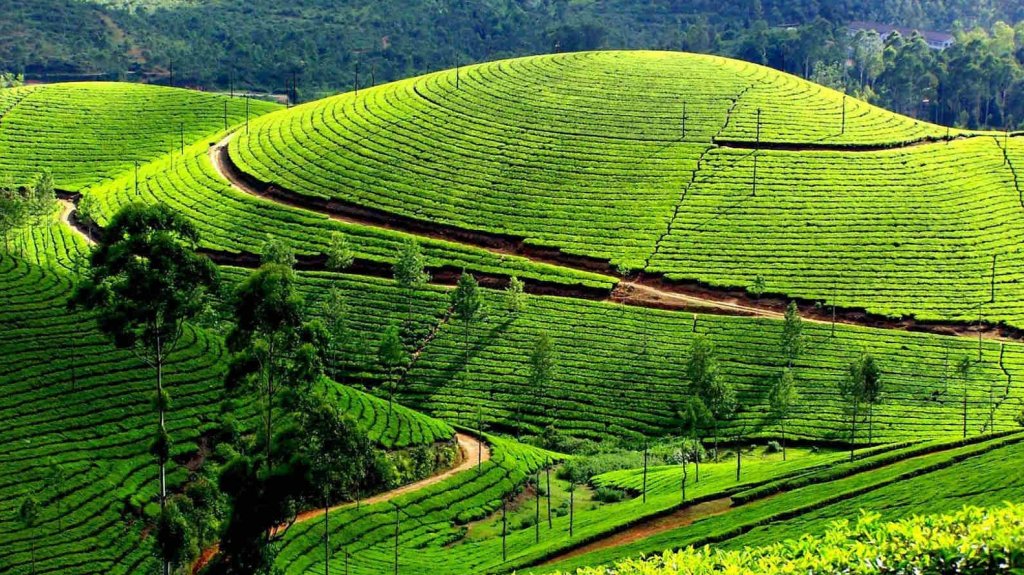
✔ The Northeast (Đông Bắc) ou Haut-Tonkin
It includes nine provinces located north of the densely populated plain of the Red River.
- The province of Hà Giang which chief town is Hà Giang.
- The province of Cao Bằng which chief town is Cao Bằng.
- The province of Tuyên Quang which chief town is Tuyên Quang.
- The province of Bắc Kạn which chief town is Bắc Kạn.
- The province of Lạng Sơn which chief town is Lạng Sơn.
- The province of Thái Nguyên which chief town is Thái Nguyên.
- The province of Bắc Giang which chief town is Bắc Giang.
- The province of Quảng Ninh which chief town is Hạ Long.
- The province of Phú Thọ which chief town is Việt Trì.

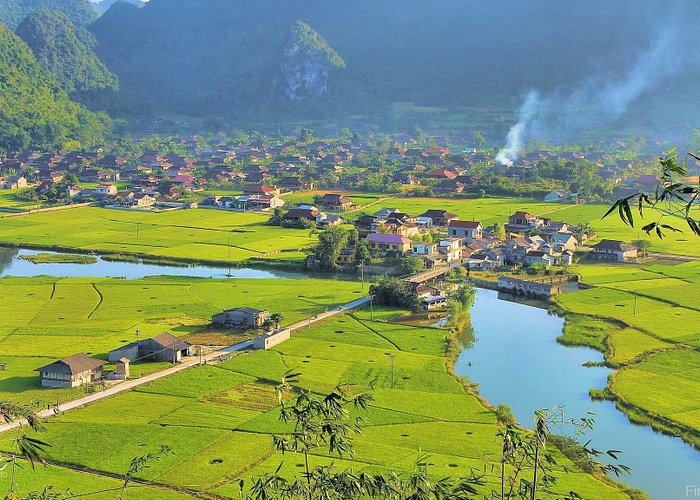

✔ The Red River Delta (Đồng bằng sông Hồng)
It contains nine relatively small but populated provinces, as well as the independent municipalities of Hanoi, the national capital and its port Hải Phòng, both based around the lower reaches of the Red River.
- The province of Vĩnh Phúc which chief town is Vĩnh Yên.
- The province of Bắc Ninh which chief town is Bắc Ninh.
- The province of Hà Tây which chief town isHà Đông.
- The province of Hưng Yên which chief town is Hưng Yên.
- The province of Hải Dương which chief town is Hải Dương.
- The province of Hà Nam which chief town is Phủ Lý.
- The province of Thái Bình which chief town is Thái Bình.
- The province of Nam Định dont le chef-lieu est Nam Định.
- The province of Ninh Bình dont le chef-lieu est Ninh Bình.
+ the capitale Hà Nội and the port city of Hải Phòng.





The climate of North Vietnam
To visit the north of the country, Halong Bay and the Hanoi region, the period from September to December is the most favorable (this is the time of the rice harvest which is called the « golden season » ) but from April to June, the period also has a certain charm.
✔ In summary :
- Spring (March to May) is the best time to travel with sunny and dry weather.
- The hot and humid summer is not very pleasant, the conditions for hiking being made difficult, and the low clouds can create a thick veil above the valleys.
- Autumn (September to November) is once again conducive to exploring Sapa and its surroundings despite still fairly high humidity and heavy showers that can occur in the late afternoon. However, beautiful sunny days generally allow you to enjoy the landscapes and the temperatures are milder..
- In winter, the cold sets in, with an alternation of beautiful days and gray skies.
Typical dishes of North Vietnam

Northern Vietnamese cuisine mainly uses vegetables, seafood, fish (harvested in brackish water) and meat.
Most dishes are embellished with shrimp paste diluted in sauce. Older and renowned for its refinement, it makes extensive use of soups, stews and grilled meats.
Here are the specialties that can be found in Hanoi and in the North.
✔ « Phở » (rice noodle soup)
A true national dish, it is a sort of emblem of the country throughout the world! So you cannot fail to taste it during your stay in Hanoi.
This soup is served in a large bowl including pho rice noodles, meat (beef or chicken), aromatic herbs (basil, chives, cilantro), bean sprouts and lemon. All of this comes together in a broth made from beef bones. This broth creates a rich, unforgettable and unique flavor typical of Vietnamese cuisine.
What is the origin of this pho soup? Its name would come from the French dish “pot au feu” and the beef would have been brought to Vietnam during the colonial period. Its exact geographical origin would be the province of Nam Dinh in the Red River Delta.
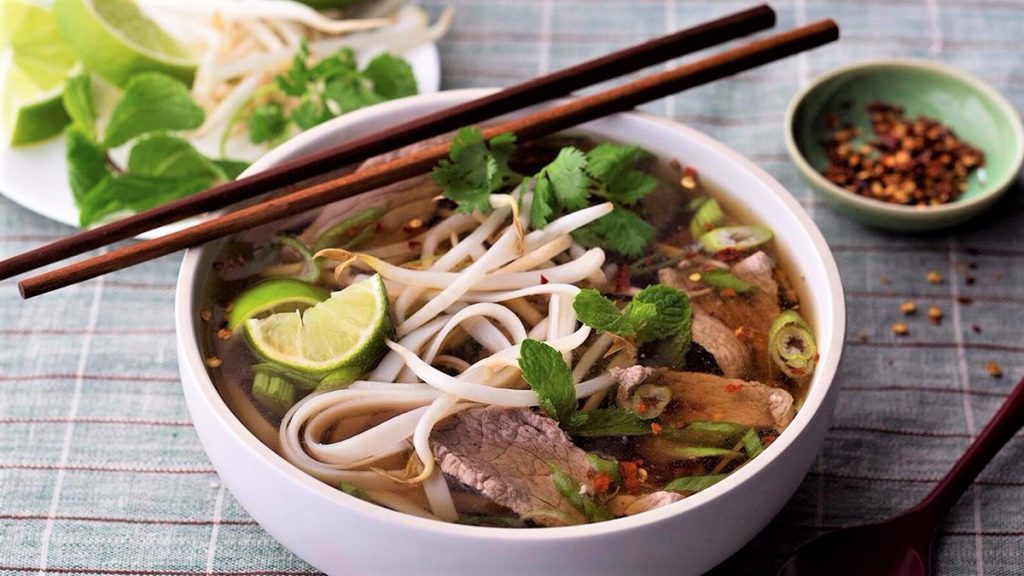
More important than its history is its flavor, so don’t wait any longer!
✔ Cha Cá (grilled fish on a bed of dill)
This is a typical dish from Hanoi! The fish (Lang or hemibagrus) is fried in turmeric on a bed of dill and chives which is eaten with grilled rice cakes, rice noodles (bún), fermented shrimp paste and peanuts. A delight!
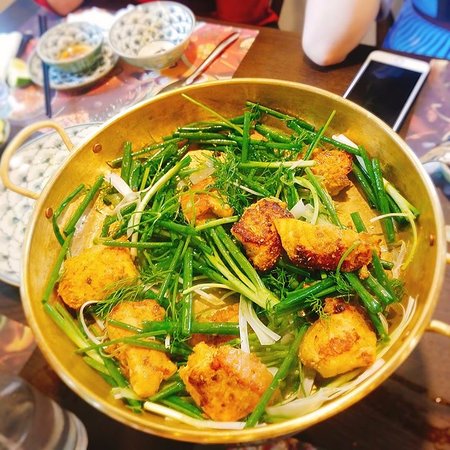
✔ Bún Chả (rice noodles and grilled pork)
Like pho soup or cha ca, Bún chả is also one of Hanoi’s signature dishes. It is certainly one of the dishes that travelers will easily remember after their visit to the Vietnamese capital.
Bún chả is simply prepared with rice vermicelli, pork, shallot, garlic and a bowl of fish sauce with chilli, papaya and carrot. Everything is served with vermicelli and a variety of fresh raw vegetables with a sweet and sour sauce. The rich flavor of the dish comes mostly from the grilled pork. You can also add spring rolls, cut into pieces.
It is an excellent popular dish that you can easily find everywhere in Hanoi. Don’t overdo it either because it’s not the healthiest dish there is, but it’s so good!!!
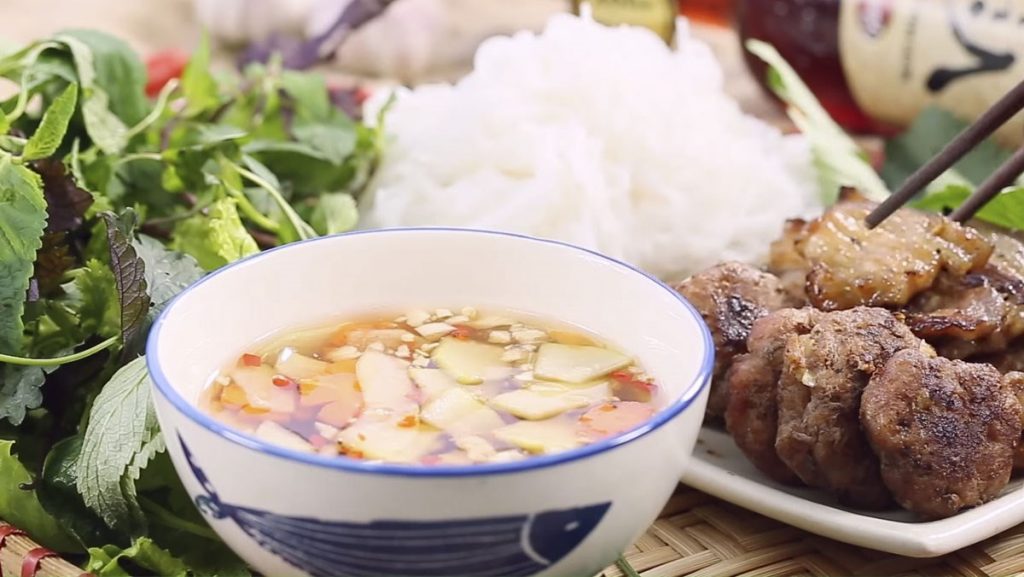
✔ Phở Cuốn (spring rolls)
Another typical dish from the Vietnamese capital! It thus holds a special place in the hearts of Hanoians and is linked to the Truc Bach district near West Lake. There, you will easily find many stalls selling this dish.
It is prepared by wrapping fried beef with onion, lettuce, cilantro, basil and other vegetables, all covered with a rice batter, the same used to make « Phở » noodles. « .


✔ Xôi (delicious sticky rice)
Rice is the basis of the Vietnamese diet. It is cooked in many different ways. Xoi or sticky rice is one of them. There are many types of sticky rice (sticky rice with green beans, sticky rice flavored with turmeric served with powdered green beans and topped with fried shallots, sticky rice with peanuts…).
Appetizing and very inexpensive, it is one of the favorite breakfast dishes (you will have understood that many dishes work very well for breakfast!). It is most often sold by vendors in markets or on the street early in the morning and can also be found in restaurants serving traditional Vietnamese cuisine.
There are a number of restaurants specializing in xoi dishes that serve it with meat (pork or chicken) and you will find many street vendors on bicycles selling it at auction.
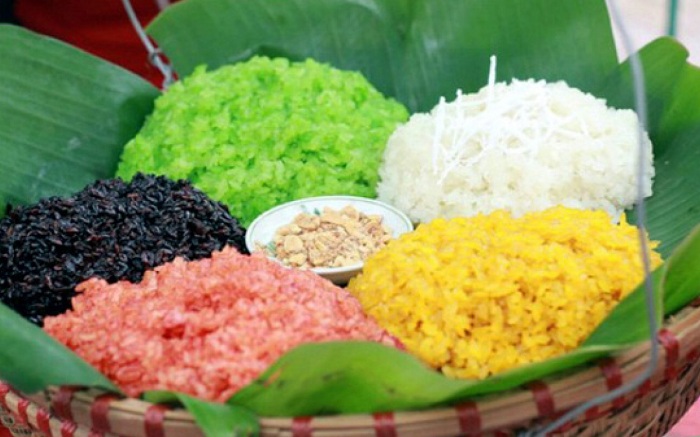


✔ Nem Rán (fried spring rolls)
Here is the real Vietnamese name for spring rolls! These are rolls of fried rice cakes, stuffed with minced pork, shrimp and crab. The stuffing can also change: chicken or just a mixture of shellfish.
Nem Rán or Chả Giò is a traditional festive dish from Vietnam. Very popular at the former imperial court, this dish is commonly called imperial pâté or imperial roll in the French-speaking world and spring roll or vietnamese roll in Anglo-Saxon countries.

✔ Bánh Cuốn (Thanh Hoa’s rolled cake)
Bánh Cuốn is made as a pancake made from rolled up rice flour and garnished mainly with minced pork meat and black mushrooms or Judas ear mushrooms. The cake sheets are transparent, paper-thin, yet surprisingly flexible. …
Ordinarily, six pieces of Bánh Cuốn are placed on a plate and garnished with parsley, mint leaves and a sprinkle of crispy golden fried onions. The Bánh Cuốn is accompanied by an essential sauce, a sauce prepared with nước mắm, lemon and pepper, plus a drop of essence of cà cuống (“water scorpion”) to enhance everything. This dish is also served with sausage according to individual preferences.
Bánh Cuốn is a favorite breakfast dish for many people. Vietnamese often eat it in the morning because it’s quick and convenient. However, you can also eat banh cuon at any time of the day.
Tasting Bánh Cuốn is like “tasting all the flavors of heaven and earth”. Once you’ve tasted a bite, you won’t want to stop.


✔ Bánh Chưng (Tet feast dish)
This is THE party cake in Vietnam. It is traditionally eaten during the Lunar New Year (Tết). On the occasion of this traditional festival, it is prepared by all members of the family. It is a glutinous rice cake stuffed with mung beans (otherwise called « green soybeans »), pork belly, and black pepper wrapped in dong leaves, similar to banana leaves. Then it is cooked for 10 to 12 hours, depending on the size of the Bánh Chưng.
A particular dish which is not necessarily to everyone’s taste. Moreover, some people fry it in order to savor it differently.
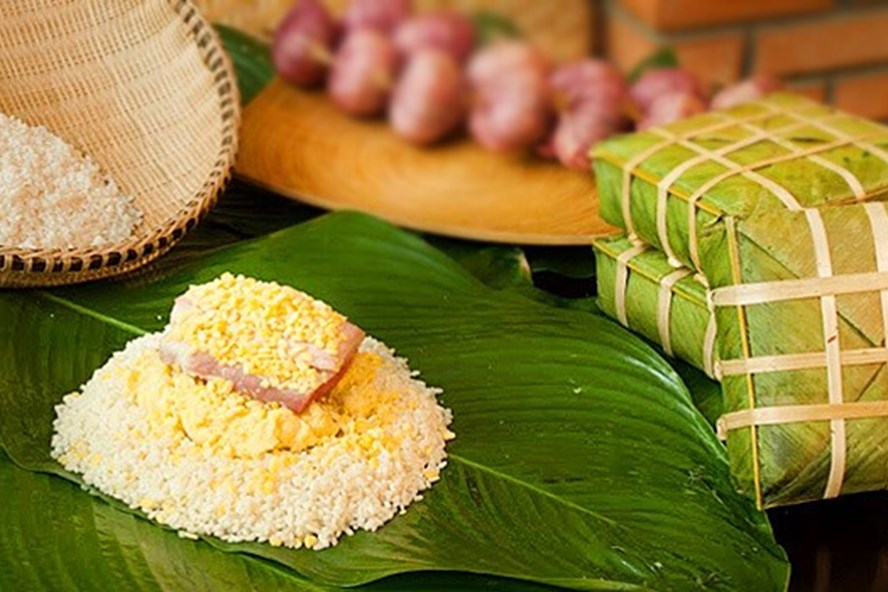



Need more info ? Contac us for personal advice!

